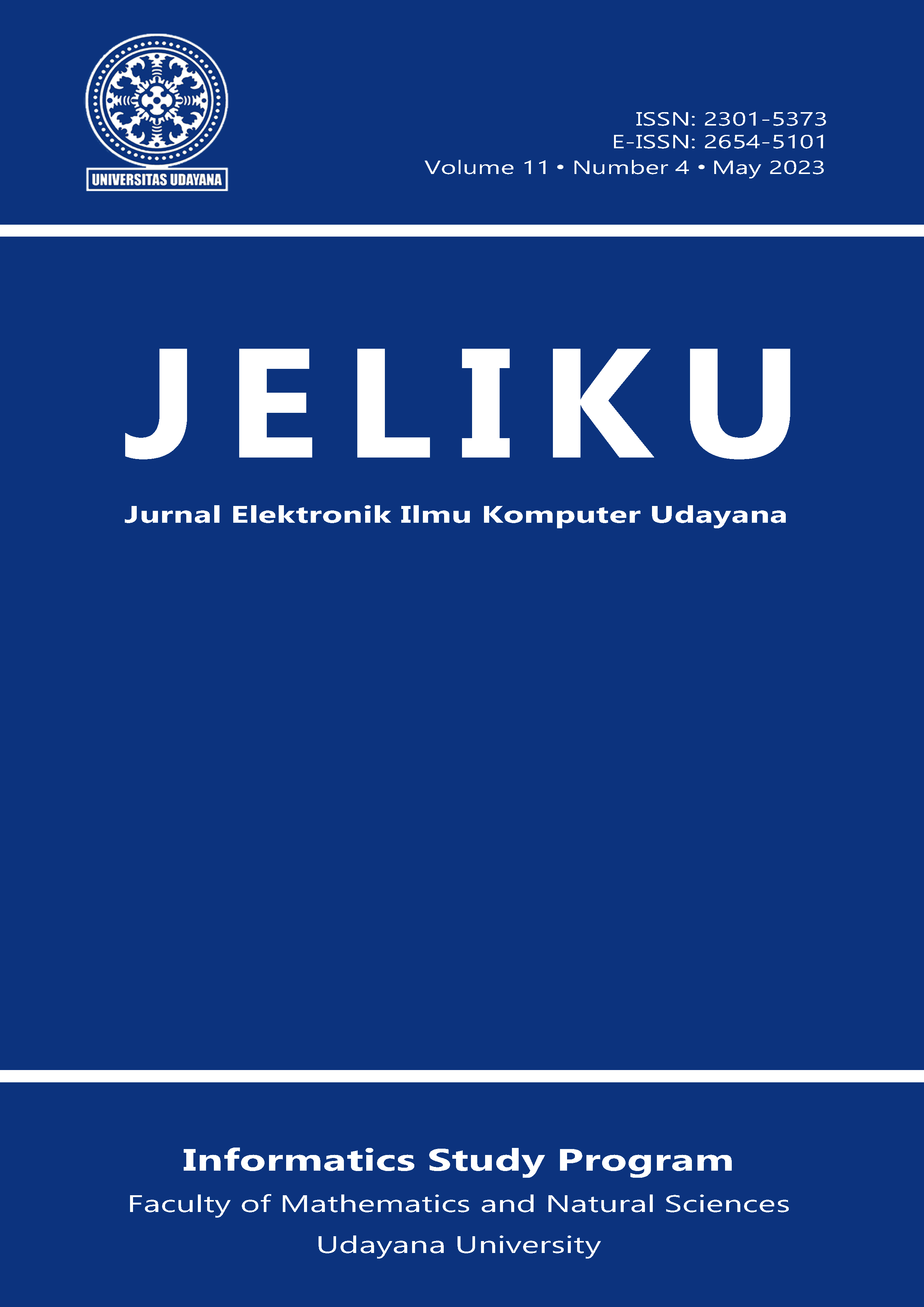Transliterasi Aksara Bali Menjadi Huruf Latin Pada Citra Tulisan Tangan
Abstract
The application of image recognition has been widely used in various fields in daily life, one of which is the introduction of useful and useful text or characters in increasing work productivity. Character recognition can be used in the process of transliterating characters, such as translating Balinese script into Latin letters. To perform the previous character transfer, image processing was needed such as preprocessing line segmentation data and character segmentation, using the Image Centroid Zone + Zone Centroid Zone and Moment Invariant feature extraction method and using the Support Vector Machine method. The introduction of Balinese script in handwriting using the Moment Invariant and Zoning feature extraction methods (Image Centroid Zone and Zone Centroid Zone) and the Support Vector Machine classification method resulted in the recognition accuracy in model formation of 90.3%, and the average accuracy generated after testing the system using test data is 82.936%. The making of the rule base for Balinese script is formed using a series of conditions using if-else that adjusts to the rules of reading Balinese script. The conversion of Balinese script in handwriting into Latin letters in this study resulted in an average accuracy of 82.182% of the 6 image data used in system testing.






